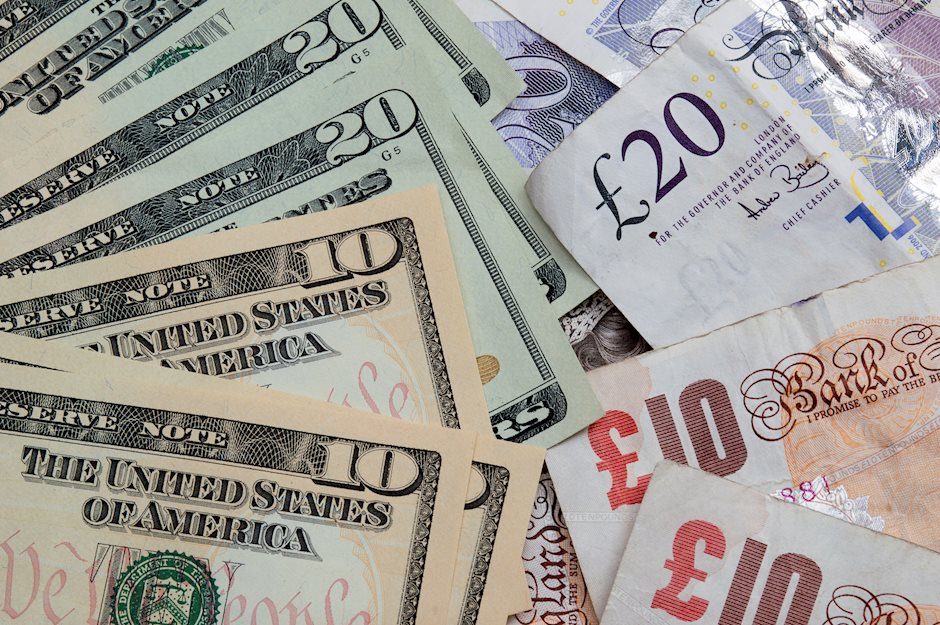GBP/USD sticks to modest gains around mid-1.3100s, below weekly top set on Wednesday
- GBP/USD draws support from a combination of factors, albeit it lacks bullish conviction.
- Expectations for a slower BoE rate-cutting cycle continue to underpin the British Pound.
- Bets for a larger Fed rate cut in September weigh on the USD and further lend support.

The GBP/USD pair trades with a positive bias around mid-1.3100s during the Asian session on Thursday, albeit it lacks strong follow-through buying and remains below the weekly top touched the previous day.
The British Pound (GBP) continues to be underpinned by expectations that the Bank of England's (BoE) rate-cutting cycle is more likely to be slower than in the Eurozone or the United States. The bets were lifted by a survey from the British Retail Consortium, which showed that spending in August increased by 1.0% YoY – marking the strongest uptick since March. This, along with a softer US Dollar (USD), turns out to be a key factor acting as a tailwind for the GBP/USD pair.
The Job Openings and Labor Turnover Survey (JOLTS) published on Wednesday showed that job openings fell to 7.673 million in July, or the lowest level since January 2021. Apart from this, dovish remarks by Fed officials lifted bets for a larger interest rate cut at the upcoming FOMC policy meeting on September 17-18 and dragged the US Treasury bond yields to over a one-year low. This, in turn, keeps the USD bulls on the defensive and offers some support to the GBP/USD pair.
That said, the cautious market mood helps limit the downside for the safe-haven Greenback. Traders also seem reluctant to place aggressive directional bets ahead of the crucial US monthly employment data – popularly known as the Nonfarm Payrolls (NPF) report on Friday. This, in turn, is seen capping the upside for the GBP/USD pair. Nevertheless, the fundamental backdrop seems tilted in favor of bulls and suggests that the path of least resistance for spot prices is to the upside.
Heading into the key data risk, investors on Thursday will take cues from the US economic docket – featuring the ADP report on private-sector employment, the usual Weekly Initial Jobless Claims and the ISM Services PMI. This, along with the US bond yields and the broader risk sentiment, might drive the USD demand and produce short-term trading opportunities around the GBP/USD pair later during the early North American session.
BoE FAQs
The Bank of England (BoE) decides monetary policy for the United Kingdom. Its primary goal is to achieve ‘price stability’, or a steady inflation rate of 2%. Its tool for achieving this is via the adjustment of base lending rates. The BoE sets the rate at which it lends to commercial banks and banks lend to each other, determining the level of interest rates in the economy overall. This also impacts the value of the Pound Sterling (GBP).
When inflation is above the Bank of England’s target it responds by raising interest rates, making it more expensive for people and businesses to access credit. This is positive for the Pound Sterling because higher interest rates make the UK a more attractive place for global investors to park their money. When inflation falls below target, it is a sign economic growth is slowing, and the BoE will consider lowering interest rates to cheapen credit in the hope businesses will borrow to invest in growth-generating projects – a negative for the Pound Sterling.
In extreme situations, the Bank of England can enact a policy called Quantitative Easing (QE). QE is the process by which the BoE substantially increases the flow of credit in a stuck financial system. QE is a last resort policy when lowering interest rates will not achieve the necessary result. The process of QE involves the BoE printing money to buy assets – usually government or AAA-rated corporate bonds – from banks and other financial institutions. QE usually results in a weaker Pound Sterling.
Quantitative tightening (QT) is the reverse of QE, enacted when the economy is strengthening and inflation starts rising. Whilst in QE the Bank of England (BoE) purchases government and corporate bonds from financial institutions to encourage them to lend; in QT, the BoE stops buying more bonds, and stops reinvesting the principal maturing on the bonds it already holds. It is usually positive for the Pound Sterling.
Author

Haresh Menghani
FXStreet
Haresh Menghani is a detail-oriented professional with 10+ years of extensive experience in analysing the global financial markets.

















